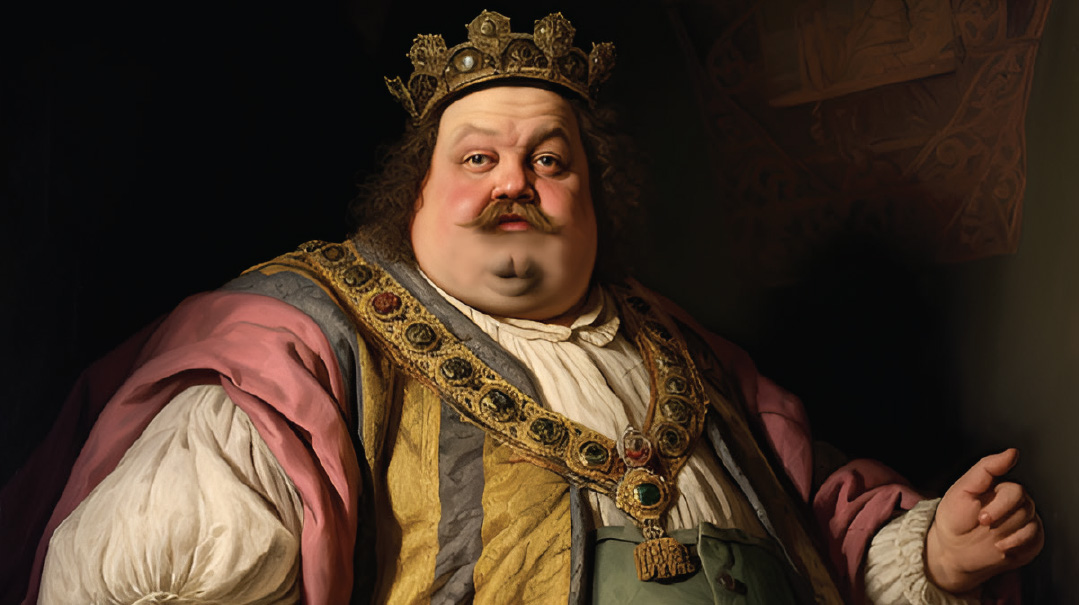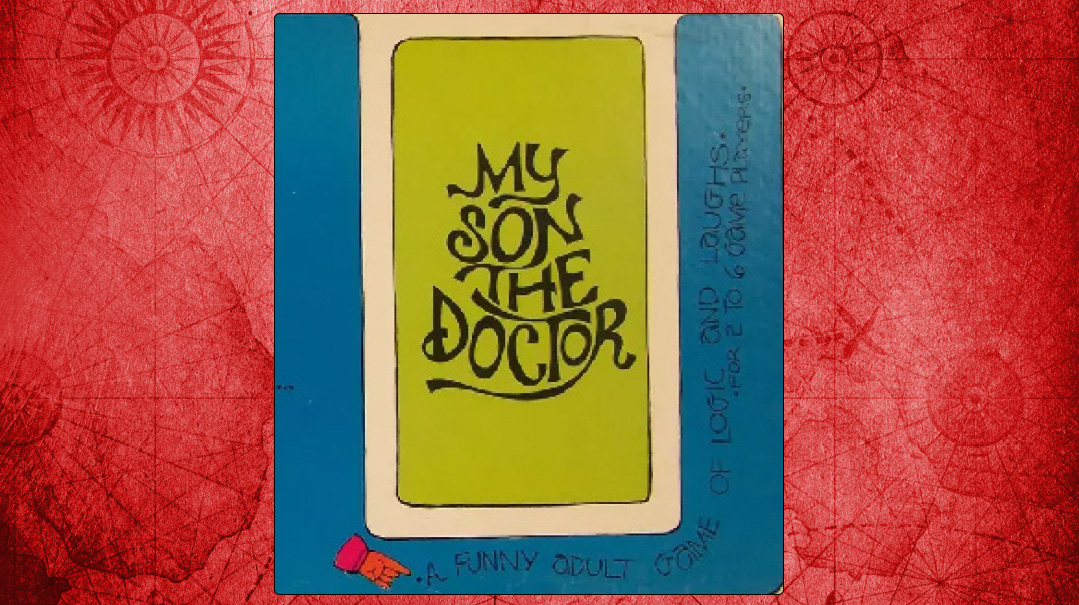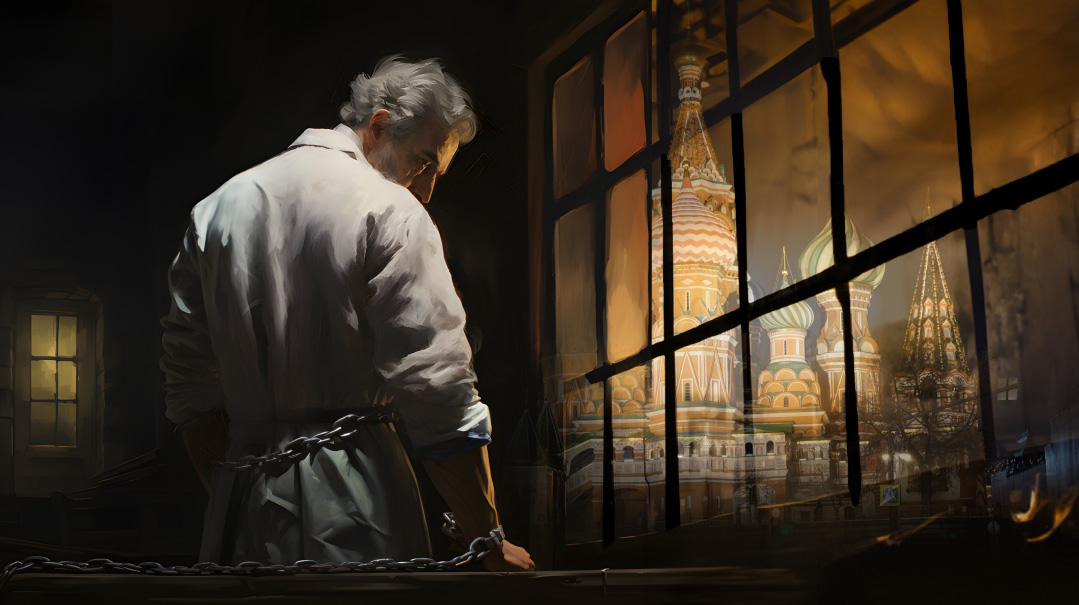Renaissance Rav
| September 26, 2023The Sforno was clear that worldly achievement was just a means to a loftier end
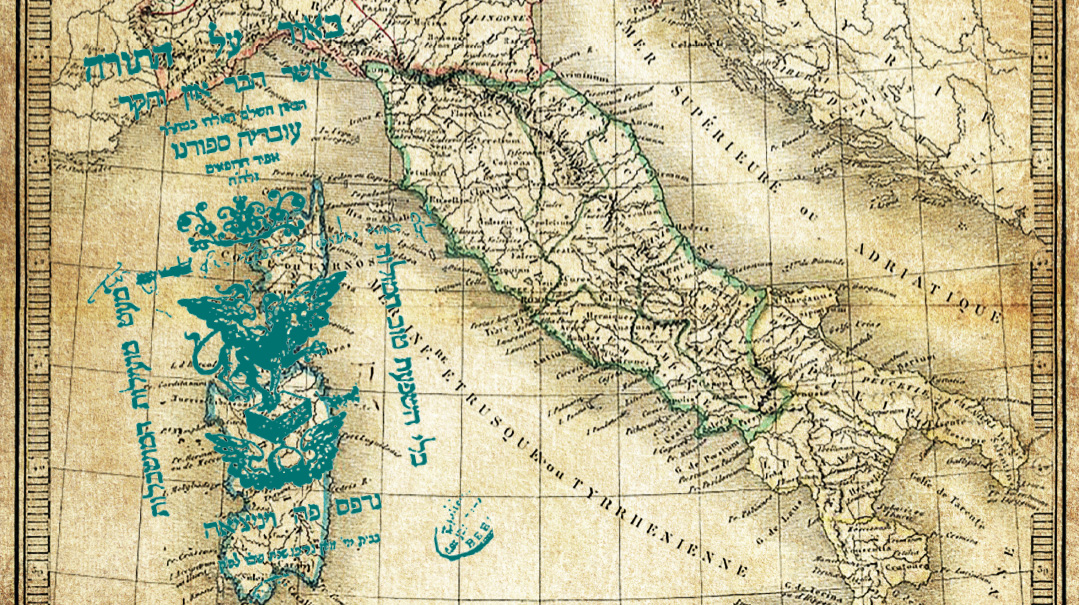
Even as Western Europe slowly emerged from the Dark Ages in the late 15th century, the Christian world was determined the Jews be the last to see the light. Like the plagues that intermittently swept the continent, a pandemic of expulsions spread from one country to another in those years. Already locked out of England and France, and barely tolerated elsewhere, Jews were expelled from a rash of cities and principalities across Germany and Italy in the decades before the Spanish Expulsion of 1492.
Amid this ocean of bigotry, Renaissance Italy was a dazzling exception. In the land of strict Catholic dogma, a new flourishing of culture and learning had begun. Its broad horizons sprang from a spirit of humanism in which Jews and their scholarship began to find acceptance.
In this island of tolerance, in about 1470, was born one of the most intriguing figures of medieval Jewish history. Rav Ovadiah Sforno was a giant in many walks of life. He was at once a brilliant Torah scholar and halachic authority whose concise commentary graces every mikraos gedolos Chumash; a renowned physician and for a time a banker; a philosopher, and teacher of one the era’s foremost Christian thinkers.
This résumé would seem to classify the “Sforno,” as he’s known to Jewish posterity, as the Jewish world’s version of the “Renaissance Man” — a polymath with expertise in many diffuse areas. In line with this notion, the Sforno is commonly compared to the Rambam, another acclaimed Torah scholar who was active as a physician.
But the Sforno is more enigmatic than simple parallels suggest; much about his life and impact remains a mystery. Rabbi Moshe Kravetz, a scholar who has dedicated his life to exploring the Sforno and his works, has managed to dispel at least some of the murkiness.
While the common narrative depicts an advocate for a synthesis of Torah and science, in his writings and personal records Rabbi Kravetz found that the Sforno was no advocate of unconditional openness. Unlike the Rambam, the Sforno downplays the need for knowledge of philosophy and directly opposes the Aristotelianism that was highly regarded by the Rambam.
The ensuing portrait does not paint a liberal Renaissance Man, but rather a Torah scholar who held traditionally conservative positions on the utility of philosophy and the place of non-Torah studies. It seems that the Sforno was in fact a staunch defender of traditional Jewish values who emphasized in his commentary on Pirkei Avos that Torah study alone carries all the answers needed to combat heretical notions.
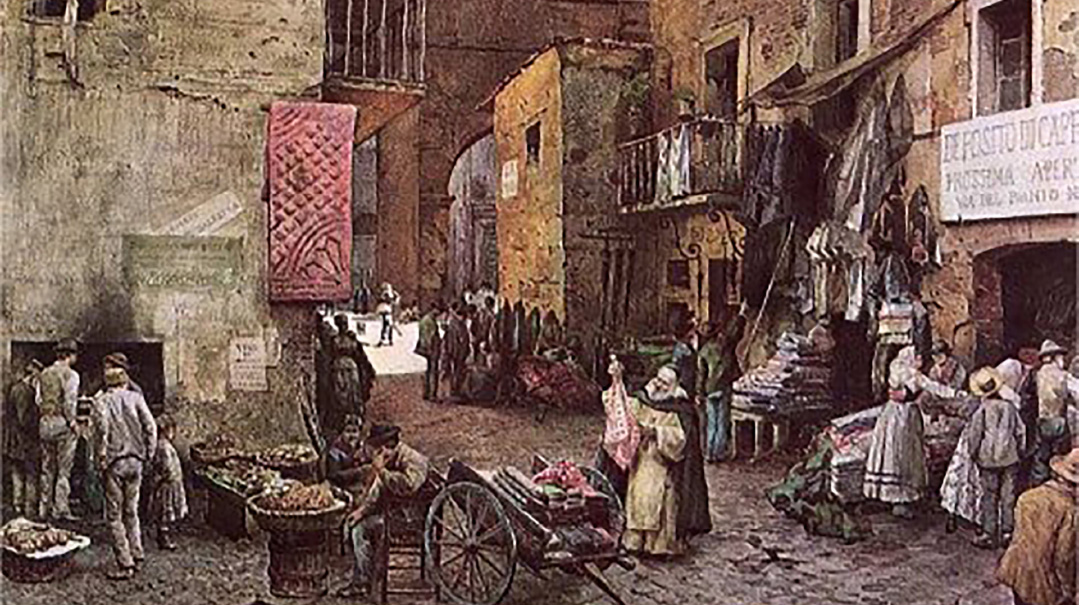
A depiction of the Roman ghetto, founded some decades after the Sforno had left
Educational Horizons
T
he lack of clarity surrounding the Sforno extends to the period that he was active in. Given his standing as a commentator, there’s a widespread assumption that he belonged to the era of the Rishonim, whereas in fact he was among the early Acharonim as a contemporary of the Beis Yosef, Rav Yosef Karo.
Although his precise date of birth is unknown, the common estimate places Sforno’s birth year as approximately 1470, in the city of Cesena on the Savio River at the northern foot of the Apennines. Testament to the suffocating Catholic atmosphere that the Renaissance had to overcome, Cesena was part of the Papal States — a patchwork of Italian territory under the Pope’s rule — when the Sforno was born.
A glance at his locale indicates the kind of regional influences that shaped the Sforno. A short distance away is Bertinoro, birthplace of the other famous “Ovadiah” — the Sforno’s great contemporary Rav Ovadiah of Bartenura, commentator on the Mishnah and later rabbi of Jerusalem. Some distance southwest lay the city of Florence, then a republic ruled by the Medici family, which was a center of Renaissance art and learning.
Born into an illustrious rabbinic family, Rav Ovadiah’s future Torah greatness was seeded young. His father Rav Yaakov is mentioned in Teshuvos Maharik by one of the foremost halachic authorities of the age, Rav Yosef Colon Trabotto. Rav Ovadiah himself alluded to the luster of his lineage in a signature to which he added the words: “Recognize whose signet ring, cloak, and letter are these [a play on the words of Tamar to Yehuda]; I am the son of gedolim, the descendant of ancient kings.”
Rav Ovadiah was the youngest in his family; his older brother Chananel was a dignified personality in his own right. An influential member of the Jewish Bologna community, he was called “the Nasi” by his brother and other contemporary sources. This brother eventually took the Sforno under his wing for many years in Bologna, supporting him and encouraging him to work on his world-famous commentary on the Torah.
Aside from his foremost occupation as a young budding Torah scholar, Sforno took interest in several general studies, including philosophy, medicine, and languages. In addition to his knowledge of Hebrew grammar, he became fluent in Latin and Arabic — both useful for classical studies.
Although this manner of combining secular knowledge with Torah was the norm during this period of Italian Jewish history, Sforno was unique in the fact that he reached prominence in both areas. He was recognized as a great posek and gadol — consulted by the great German halachic authority Maharam Padua — and by the general Italian population as one of its greatest doctors.
It was no easy feat for any Jew living in Catholic Italy to rise to the top of his profession. In Rav Ovadiah’s case, that full measure of professional development took him to Rome.
The fact that Sforno received a doctorate in medicine and became a practicing MD in Catholic Italy should not be taken for granted, considering that he was a Jew living in a land where anti-Semitism was rampant.
In fact, the Sforno’s medical diploma is instructive: It includes a papal dispensation, as the law excluded Jews from all nobility titles, including the doctorate.
Also noteworthy about this document is the fact that the diploma was not issued in Rome, where Sforno studied, but rather from the University of Ferrara, indicating that he had transferred to this community, which was a center of Torah learning.
That Ferrarese connection led to another important stage in Sforno’s life — it was in Ferrara that he met his future wife. Soon after receiving his diploma, Sforno married Allegra (Italian for “happiness”), the daughter of Noah Raphael da Norsa, a leading Ferrarese banker, and a leading member of one of Renaissance Italy’s most important Jewish families.
Orphaned from her father at a very young age, Allegra’s brothers Emanuel, Elia, and Simon, took their father’s place in marrying off their sister to the Sforno.
Sforno and his wife Allegra had at least four children: Yaacov, Tzemach, Moshe, and Devora. In another of the archival details that shed a measure of light on the Sforno’s life, his son Yaacov appears as a signatory on a psak halachah involving a chalitzah, implying that he was a respected posek in his own right. This ruling is cited in Pachad Yitzchak, an encyclopedic work authored by Rav Yitzchak Lampronti, himself rabbi of Ferrara in later years.
Lesson for Life
AT
some point Rav Ovadiah ran into a problem: He was in desperate need of funding. This led him to an unusual source of funding that had repercussions for the Jewish people in the decades to follow.
As the Church began to come to terms with the growing influence of the Renaissance, pursuit of the arts and humanities became commonplace. (Some are of the opinion that this was not a sudden burst of goodwill on the part of the papal rulers, but rather a realization that the arts and culture had to be incorporated in, rather than rejected from, the Catholic religious experience. Michelangelo’s religious artwork and sculpture and the induction of music into church ritual are evidence of this shift.)
Part of the new interest in the arts and learning was a rediscovery of the glories of the classical era, and other sources of knowledge that had fallen by the wayside, including the original text of the Bible and an attempt to understand the literature of the Jews.
A Christian scholar by the name of Johann Reuchlin was swept by this movement. He had great interest in learning Hebrew specifically with Jewish scholars, in order to gain a true understanding of the language and its grammar.
Reuchlin was a famous figure in the history of humanism, a cultural movement that dignified humanity and attempted to revive the learning of the Greco-Roman world, and which was an important factor in the emergence of the Renaissance.
Reuchlin grew increasingly absorbed in his study of Hebrew, which held for him more than a mere linguistic interest. As a scholar, he could not allow himself to rely only on the early Latin translations. He wanted to study the original.
His first teacher was Rabbi Yaacov Yechiel Loans (or rather Yaacov ben Yechiel according to many sources), who served as physician to Emperor Frederick III of Habsburg.
He then furthered his expertise under Rav Ovadiah, who was studying for his medical doctorate in Rome and apparently needed the extra funds provided by these tutoring sessions.
What remains unclear, however, is precisely what Rav Ovadiah taught Reuchlin. A contemporary academic (S. Campanini) is convinced that this could not be a standard tutoring of the Hebrew language, simply because Reuchlin had a previous tutor in Hebrew in the form of Rabbi Loans, and had published his own Hebrew grammar book before meeting the Sforno. In fact, an academic work about Reuchlin includes a letter that Reuchlin penned in beautifully written Hebrew to his moreh, or teacher (Reuchlin Briefwechsel).
In certain Christian academic circles, there was a focus on studying Kabbalah. According to Campanini, it seems that Reuchlin was interested in learning Kabbalah. This he derived from correspondence that Reuchlin carried out with Rav Yaacov Margolis, who refused his request to teach him Kabbalah. Apparently, that is why he reached out to Sforno and asked to study with him.
Campanini is of the opinion that Reuchlin viewed the texts that he learned with the Sforno as related to Kabbalah; this seems apparent from his own choice of words when referring to the moreh in his writings, terming them, “cabalah.”
There is no doubt, however, that Sforno did not teach Reuchlin Kabbalah. Rather he introduced him to Jewish philosophical ideas, those mentioned primarily in the Moreh Nevuchim of the Rambam.
Sforno’s willingness to teach Reuchlin is cited in later poskim in the context of the halachic issue relating to teaching Torah to gentiles. In the modern era, the dean (rosh yeshivah) of the Rabbinical Seminary of Berlin, Rabbi Dr. Dovid Tzvi Hoffman, writes in his Melamed L’Ho’il that one should not learn from Sforno in this regard, since he had a special dispensation to assist the Jewish nation at the time, “and even so the gedolim vehemently disagreed with him.”
Rabbi Kravetz believes that this last claim is mistaken and due to the confusion of two scholars who lived and were active in the same location and time: the Sforno and Rabbi Eliyahu Bachur, a scholar of German descent who also studied with non-Jews.
While Bachur was attacked by many for his extensive study of Torah with gentiles, Sforno was not criticized at all. Bachur mentions this fact in his introduction to Masoret HaMasoret, and complains that only he was singled out and attacked while others were saved from this fate.
Rabbi Kravetz is convinced that Sforno evaded criticism due to the fact that he taught non-Jews only very specific texts, and that he was highly regarded as a great gadol b’Torah by both his contemporaries and by gedolim throughout the ages. They surmised that he surely had a valid reason for studying Torah texts with Reuchlin.
Unintended Consequences
AS the historical record shows, the Sforno’s study sessions with Reuchlin likely helped shape the latter as an important advocate.
It is a widely accepted fact that the years (or months, according to some researchers) under the Sforno’s tutelage resulted in Reuchlin’s fierce battle against the burning of the Talmud initiated by the meshumad Johannes Pfefferkorn, who attempted to convince the Church that the main obstacle to mass conversion from Judaism to Christianity was the Jews’ attachment to their seforim.
(The clash between Pfefferkorn and the famous humanist was dramatized by Rabbi Marcus Lehmann in the latter’s classic historical novel, Joselin of Rosheim.)
In Pferfferkorn’s words, “The causes which hinder the Jews from becoming Christians are three: first, usury [their livelihood dependent on taking interest from gentiles]; second, because they are not compelled to attend Christian churches to hear the sermons; and third, because they honor the Talmud.”
Upon the request of Emperor Maximillian, Reuchlin became involved in an official inquiry into the matter. From this point onward, a long-lasting war of pamphlets erupted between Reuchlin and Pfefferkorn, with Reuchlin relying on his scholarship and intimate knowledge of Torah texts to vehemently contradict many of the latter’s claims.
Reuchlin’s efforts on the matter resulted in him being summoned before the Inquisition and a trial opened against him, which was finally quashed only three years later. Rabbi Kravetz points out that although the court case against Reuchlin was dismissed, it is common knowledge that he suffered until his death from persistent efforts to persecute him in and outside of the courts.
There is no doubt, however, that Reuchlin’s efforts prevented the public burning of the Talmud and other seforim. Many believe this outcome was a direct result of the Sforno’s influence on his pupil.
In that way, the unintended consequence of Sforno’s attempt to fund his medical studies was the creation of one of history’s great philo-Semites, and the ultimate salvation of Torah study across the Habsburg Empire.

The Sforno’s concise and fundamental commentary on the Chumash proved a more enduring legacy than his philosophical work. Pictured here is the original manuscript on Yeshaya
Parnassah Problems
Life in Rome was not easy for the Sforno, although he was highly regarded there by the local Jewish community as a great talmid chacham and posek. Despite his accreditation as a doctor and a stint as a banker, it seems that Sforno had difficulty making a decent livelihood.
The fact that Sforno seemingly did not make a proper living, despite his credentials in so many areas of knowledge has baffled many who researched his life. Rabbi Kravetz provides us with a breakdown of his efforts and attempts to suggest a reasonable solution: “Sforno was in banking — that is a fact — however, we find in several places in his commentary that he generally looked down on banking as a valid source of income, even if the clients were gentiles. It seems reasonable that he wished to distance himself from this viable option and opted to make a living as a doctor instead.”
But due to his extremely heavy responsibilities to Rome’s kehillah as a posek, dayan, and rosh yeshivah, he was left with very little time to make a respectable living as a doctor.
After several years in Rome and a period of wandering, Rav Ovadiah’s brother Chananel eventually invited him in 1527 to live near him in Bologna, committing to assume responsibility for his livelihood.
Eventually, his wealthy brother passed away in his lifetime, leaving behind no children, which left Sforno with his brother’s fortune.
A recent academic work analyzed Sforno’s will, in which he clearly differentiates between his own monies and those he inherited from his brother. Rabbi Kravetz proved from this will that Sforno’s subsequent wealth was never due to his own efforts, and that his presumed wealth did not contribute to his success as a doctor or scholar. An additional biographical note that emerges from his recently published will is the fact that he remarried after the passing of his wife, the mother of his children, although his second wife’s name is unknown.
In Bologna he simultaneously served as a doctor, rosh yeshivah, and as a dayan on the court of the esteemed gadol of Bologna, Rav Avraham HaCohen. Records from this period list the Sforno as one of the two best practicing physicians in Northern Italy. Evidence of his prominence in psak halachah may be found in a reference to him in the responsa of Maharam Padua, who writes of him, “Who can be compared to his proficiency in issuing halachic rulings?” (Siman 48).
What’s in a Name?
While the general public seems to have adopted the common pronunciation of Rav Ovadiah’s name as “Sforno,” many, particularly in the yeshivah world, refer to him as the “Sipurno.”
Based on scores of official documents, many of which have come to light only recently, Rabbi Kravetz is adamant that the correct pronunciation is Sforno. These documents were housed for hundreds of years in the extremely orderly archives of the Bologna municipality, where the Sforno resided for several decades. In all of these documents the name Sforno, as in the common pronunciation, appears prominently.
So how did the mispronunciation arise? Rabbi Kravetz is convinced that the mistake emanates from a printing of the Sforno al HaTorah (in one volume) in the 1840s, in which the Polish title page says Sipurno in Polish instead of the correct Sforno.
Another riddle associated with Sforno’s name is the fact that it gives the impression that it stems from a locality with a similar name. This may be derived from the fact that at times the name appears as “miSforno” or “DiSforno.”
The problem is, no such locality can be found anywhere in Italy. The closest resemblance may be found in a suburb of Rome called “Seprano.” While this might be a possible solution, says Rabbi Kravetz, others suggest that the name is related to the Zifroni family (the family of the well-known Immanuel of Rome mentioned in the Shulchan Aruch’s discussion of hilchos Shabbos).
A third suggestion: Perhaps a locality by the name of Sforno actually existed in the past in Italy or in Spain (as Sforno’s family originally resided in Spain) and was eventually lost to history due to its small population size.

Sforno was above all a defender of traditional Torah values” – Mishpacha’s Rabbi Ephraim Zalman Galinsky (left) with Rabbi Moshe Kravetz
Torah Commentator
IT
was in Bologna that Rav Ovadia wrote his groundbreaking commentary on Chumash at the behest of his brother, as documented in the preface by the Sforno himself.
Although Sforno authored many seforim and teshuvos, and was known in his day as one of the prominent poskim of the era, his commentary on Torah brought him fame for centuries to come. It is not the first time that a gadol is remembered for a certain sefer he wrote, even though he may not have personally considered it the peak of his career.
The brevity of the Sforno’s commentary on the Chumash lends itself to a broad view of the themes that reoccur across his writings. Given his unique interactions with both the Torah and secular worlds, and experience tutoring Reuchlin, it’s not surprising that the Sforno repeatedly goes to unusual detail to define the Torah’s relationship to righteous non-Jews.
Commenting on the post-Sinai declaration (Shemos, 19:5) that the Jewish people are “segulah mikol ha’amim — more treasured than the other nations,” the Sforno addresses the issue of superiority and particularism that would naturally have occurred in a conversation with a humanist like the Catholic Reuchlin.
“Even though the entire human race is more precious to Me than all the lower beings because humanity is the intended purpose [of creation],” he writes, “nevertheless you [Jews] will be more precious than others. ‘For Mine is the Earth’ and the difference between Jews and gentiles is a question of degree — and the righteous among the nations are without doubt precious to me.”
Noteworthy here is that the Sforno doesn’t resort to the sort of apologetics that are used to avoid charges of Jewish particularism, but nevertheless provides a framework for a lofty, universalistic view of humanity.
The Sforno’s medical knowledge also informed his commentary to a considerable extent regarding miraculous phenomena described in the Torah. For example, he puts Sarah’s pregnancy at the unprecedented age of 90 in context, discussing when pregnancy could occur in an older woman (Shemos, 21:3) and adding that the birth of a son specifically, is “not like the general case of those who give birth in old age, who give birth to a female.”
Taking On Aristotle
Like many an author of seforim before and since, the Sforno’s incisive commentary on the Torah, which has ranked him since as one of the Torah greats, wasn’t seen by him or his contemporaries as his signature work.
The Sforno’s magnum opus was a philosophical treatise that is barely known today titled Ohr Amim. The goal in writing this sefer was to challenge some of Aristotle and other major philosophers’ theories that stand in contradiction with the fundamentals of Jewish faith, doing so by using Aristotle’s own teachings.
In the Sforno’s days, with the renewed interest in classical antiquity, Aristotle’s teachings were a hot topic of discussion. We may determine the level of interest from the fact that this sefer was translated by Sforno himself into Latin and dedicated to King Henry the Second of France — whose wife, Catherine, was a Florence-born Medici — and sent to him as a gift alongside the Sforno’s commentary.
The reason this work is considered marginal today is simply that Aristotle’s teachings no longer generate interest.
Many of the same ideas that appear in Sforno’s Ohr Amim can be found in his commentary on Chumash as well. Ohr Amim was printed in 1537, and the commentary was published between 1537 and 1543, with the earliest known printed copy of the commentary still in existence in Moscow.
But while the Sforno’s philosophical studies and expertise in the contemporary battle of ideas undoubtedly made him a prominent figure in the intellectual circles of his day, he took pains to emphasize that pure Torah study itself should be a Jew’s main focus.
In his commentary of Maseches Avos, on the mishnah’s exhortation to “turn over and over” and delve deeply into Torah study, he comments: “Turn in the Torah to understand and look at its wonders and you will not need the books of the philosophers of the nations and their scholars.”
Regarding the mishnah’s instruction that one must know how to answer an apikorus, he takes a similarly conservative approach, emphasizing that the truth is to be accessed from within Torah sources themselves, without recourse to the very studies that he himself undertook.
“By diligently studying the Torah only and not in other things,” he comments, “you will find in it a sufficient answer for unbelievers.”
Lectures on the Margins
Several manuscripts have been found that make up the earliest version of Sforno’s commentary on Chumash. However, one of them stands out as extremely unique. While Sforno does not normally mention sources for his explanations of the pesukim, one of the early manuscripts does in fact solve this issue.
This manuscript is not Sforno’s handwritten copy of his commentary but rather a summary of Sforno’s shiurim on the parshah, which eventually served as the basis for his written commentary. These shiurim were recorded on the margins of another 800-page sefer, The Ralbag on the Torah, published in 1474 by a close talmid of Sforno. Surprisingly, in this manuscript Sforno’s sources are given, as presented during his oral lectures.
This manuscript was originally catalogued as another standard early manuscript of Sforno’s commentary on the Torah. But when Rabbi Kravetz began comparing comments from the standard editions to those in this manuscript, he discovered inconsistencies. He then realized that this in fact was not an early copy of the commentary, but rather a recording of oral shiurim given by Sforno on the order of the Torah.
While the ideas are many times the same, in this manuscript Sforno relates to current events, and even criticizes rabbis living in his time as ignoring the spiritual needs of the populace. Sforno states that these rabbis do not teach anything relating to ahavas Hashem (the love of G-d) or yiras Hashem (fear of G-d), and do not teach the people emunah, but rather focus on halachah alone.
(Rabbi Kravetz eventually published these shiurim as the volumes Amar HaGaon on both Torah and Tehillim.)
Medieval Twilight
Although Italy was the birthplace of the Renaissance that signaled the end of medievalism in Europe, progress was far from linear. It likely wouldn’t have surprised the Sforno that the most fanatic of all popes, Paul IV, came to power shortly after the Sforno’s death in 1550, and instituted harsh measures against the Jews of Rome, including corralling them into a ghetto and requiring them to wear distinct hats.
Paul also moved to expel the Jews of Bologna, where Rav Ovadiah had been active in the last decades of his life. The freedom and opportunity enjoyed by the Sforno was under threat by the forces of Christian anti-Semitism that dominated the rest of Europe.
But no papal fiat could recapture the light that the Sforno had released into the world. Active in the twilight zone between rabbinic and worldly endeavors, seeking to reconcile Torah study and its philosophical challenger, a product of a meeting between the worlds of the Renaissance and the beis medrash, the Sforno was clear that intellectual achievement was merely a means to a loftier end.
At a recent history conference held in Hamburg University, a lecturer implied that Sforno had been liberal in his views. Campanini, who is extremely knowledgeable in Sforno’s writings and life, immediately retorted, “The Sforno was not a Reform Rabbi.”
“Sforno was no doubt broadminded,” Rabbi Kravetz says, “but let no one doubt his true priorities. He was, above all, a fierce defender of traditional frum values.”
And the best proof is the Sforno’s own writings. “The purpose of intellectual inquiry,” he wrote in his introduction to his masterpiece on Chumash, “is to understand and know the full extent of the Holy G-d, and to know his ways of goodness and kindness, especially regarding the human race.”
(Originally featured in Mishpacha, Issue 980)
Oops! We could not locate your form.




